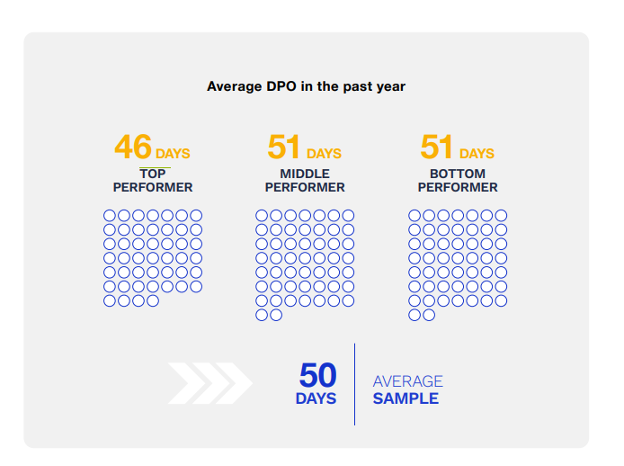Top Performing Middle Market Firms Use Working Capital as a Strategic Tool

All businesses face surprises from time to time — where unplanned, emergency expenses crop up.
And of course, having the capital on hand — working capital, that is — can help CFOs and treasurers rise to meet the challenges and opportunities that come with unforeseen events, or competition, or macro-economic headwinds.
But: Strategy is a critical part of any planning, crystallizing in a long-term roadmap that leverages working capital to help companies buy the inventory, hire the staff, get new initiatives off the ground to scale into growth.
Some companies use working capital more adroitly than others, and so they offer a few lessons for their peers.
To that end, in the “2023-2024 Growth Corporates Working Capital Index,” a Visa report, we found that several characteristics define, and are representative of, the “top performers” among these middle market firms — those with annual revenues of between $50 million to $1 billion.
The “top performers,” we found, have experienced a tangible benefit to their bottom lines as a direct result of using working capital, and external working capital solutions, in a prudent and proactive manner. They saved an average of $3.3 million annually by using working capital solutions in creative, strategic and supplier-centric ways, and eliminated some of the inefficiencies that stem from older, antiquated processes.
Who They Are
The most efficient middle market firms have annual sales between $50 million and $250 million, which would put them at the lower “end” of the scale of revenue. And geographically and operationally speaking they tend to be doing businesses as online marketplaces and focus on Latin America. They use virtual credit cards and working capital loans as their tools of choice — in terms of financing options — to support strategic business needs.

The strategic actions include integrating more suppliers into their enterprise resource planning and payment systems and leveraging data to better predict upcoming shortfalls and financing needs — anticipating cash flow needs rather than simply reacting to them. Top performers are more likely to have a “regular portfolio” of the same suppliers integrated into their payment systems. The tend to pay a larger percentage of their invoices early — and by extension, this means that they can secure better deals and have better buyer-supplier relationships.
The accompanying chart shows, too, that efficient management of days payable outstanding (DPO) can set the “top performers” apart from other companies. The best-managed, most efficient and relatively higher margin operators wound up having an average DPO of 46, roughly 11% better than middle and lower-echelon performers. Two-thirds of middle market CFOs used working capital strategically, but 70% of all those who used working capital saw improved business metrics as a result.

